-
 Bitcoin
Bitcoin $88,210.6273
1.11% -
 Ethereum
Ethereum $1,583.4647
-3.31% -
 Tether USDt
Tether USDt $1.0001
0.01% -
 XRP
XRP $2.0863
-1.39% -
 BNB
BNB $600.3082
-0.60% -
 Solana
Solana $139.2799
-0.26% -
 USDC
USDC $0.9999
0.00% -
 Dogecoin
Dogecoin $0.1615
0.68% -
 TRON
TRON $0.2460
0.59% -
 Cardano
Cardano $0.6259
-2.11% -
 Chainlink
Chainlink $13.1442
-2.79% -
 UNUS SED LEO
UNUS SED LEO $9.1314
-2.97% -
 Avalanche
Avalanche $19.9362
-0.27% -
 Stellar
Stellar $0.2483
-0.83% -
 Toncoin
Toncoin $2.9261
-3.27% -
 Shiba Inu
Shiba Inu $0.0...01245
-1.50% -
 Sui
Sui $2.2359
1.01% -
 Hedera
Hedera $0.1707
-0.15% -
 Bitcoin Cash
Bitcoin Cash $345.2366
1.60% -
 Hyperliquid
Hyperliquid $18.5882
3.98% -
 Litecoin
Litecoin $78.9028
-0.17% -
 Polkadot
Polkadot $3.7550
-4.00% -
 Dai
Dai $1.0000
-0.01% -
 Bitget Token
Bitget Token $4.4634
-1.87% -
 Ethena USDe
Ethena USDe $0.9992
-0.01% -
 Pi
Pi $0.6331
-0.71% -
 Monero
Monero $215.2673
-0.14% -
 Pepe
Pepe $0.0...08009
3.09% -
 Uniswap
Uniswap $5.2814
-2.61% -
 OKB
OKB $50.9064
-0.56%
What is the TPS of the blockchain and how to improve it?
TPS measures blockchain transaction speed; improving it involves layer 2 solutions, sharding, and consensus upgrades for better scalability and efficiency.
Apr 14, 2025 at 01:15 am

What is the TPS of the Blockchain and How to Improve It?
Transactions per second (TPS) is a critical metric in evaluating the performance of a blockchain network. It measures the number of transactions a blockchain can process in one second, directly impacting the scalability and efficiency of the system. Understanding TPS and exploring methods to enhance it are essential for developers and users within the cryptocurrency ecosystem. This article delves into the concept of TPS, its significance, and various strategies to improve it.
Understanding TPS in Blockchain
TPS represents the throughput of a blockchain, indicating how many transactions can be validated and added to the blockchain within a single second. For instance, Bitcoin's TPS is around 7, while Ethereum's is approximately 15. These numbers highlight the limitations of these networks in handling large volumes of transactions, leading to slower processing times and higher fees during peak usage.
The significance of TPS lies in its direct impact on the user experience. A higher TPS means faster transaction confirmations, lower fees, and better overall performance. This is crucial for blockchain networks aiming to support applications requiring high transaction volumes, such as decentralized finance (DeFi) platforms and gaming ecosystems.
Factors Affecting TPS
Several factors influence the TPS of a blockchain network. Block size is a primary determinant; larger blocks can accommodate more transactions, potentially increasing TPS. However, larger blocks also increase the time required for block propagation across the network, which can lead to centralization issues.
Block time is another critical factor. Shorter block times allow for quicker transaction confirmations, but they can also lead to increased orphan blocks and network congestion. Consensus mechanism plays a significant role as well; Proof of Work (PoW) systems, like Bitcoin, tend to have lower TPS due to their energy-intensive nature, whereas Proof of Stake (PoS) and other consensus algorithms can achieve higher throughput.
Strategies to Improve TPS
Improving TPS involves various technical and architectural enhancements. Here are some effective strategies:
Layer 2 Scaling Solutions: These solutions, such as Lightning Network for Bitcoin and Optimistic Rollups for Ethereum, process transactions off the main blockchain, significantly increasing TPS. They work by bundling multiple transactions into a single transaction on the main chain, reducing the load and speeding up processing times.
Sharding: This technique involves dividing the blockchain into smaller, parallel pieces called shards. Each shard processes its own set of transactions, allowing the network to handle more transactions simultaneously. Ethereum's transition to Ethereum 2.0 is a prime example of implementing sharding to improve TPS.
Consensus Mechanism Upgrades: Switching from PoW to more efficient consensus mechanisms like PoS or Delegated Proof of Stake (DPoS) can dramatically increase TPS. For instance, EOS uses DPoS and claims to achieve thousands of TPS.
Increasing Block Size and Reducing Block Time: Adjusting these parameters can directly impact TPS. However, these changes must be carefully managed to avoid network instability and centralization risks.
Implementing Layer 2 Scaling Solutions
Layer 2 scaling solutions are a popular approach to improving TPS. Here's a detailed guide on how to implement the Lightning Network for Bitcoin:
Install a Lightning Network Wallet: Choose a reputable wallet that supports the Lightning Network, such as Zap or Muun. Download and install the wallet on your device.
Fund Your Wallet: Transfer Bitcoin from your main wallet to the Lightning Network wallet. This step involves creating a channel with the network, which requires an initial deposit.
Open a Payment Channel: Use the wallet to open a payment channel with another Lightning Network user. This channel allows for instant, off-chain transactions between the two parties.
Conduct Transactions: Perform transactions within the channel. These transactions are processed instantly and at a lower cost compared to on-chain transactions.
Close the Channel: Once you're done with your transactions, close the channel. The final state of the channel is then recorded on the Bitcoin blockchain, settling the transactions.
Implementing Sharding
Sharding is a more complex but highly effective method to improve TPS. Here's how to implement sharding in a hypothetical blockchain network:
Design the Sharding Architecture: Determine the number of shards and how they will interact with each other. Each shard should be capable of processing transactions independently.
Implement Cross-Shard Communication: Develop protocols for transactions that span multiple shards. This involves creating mechanisms for shard coordination and data consistency.
Deploy Sharding Nodes: Set up nodes that will manage each shard. These nodes should be distributed across the network to ensure decentralization.
Test and Optimize: Conduct thorough testing to ensure the sharding system works as intended. Optimize the system based on performance metrics and user feedback.
Real-World Examples of TPS Improvement
Several blockchain projects have successfully implemented strategies to improve their TPS. Solana is known for its high throughput, claiming to achieve over 65,000 TPS through a combination of PoS and a unique consensus mechanism called Proof of History (PoH). Polkadot uses a sharding-like approach called parachains, allowing for parallel transaction processing and significantly increasing TPS.
Ethereum is undergoing a major upgrade with Ethereum 2.0, which includes transitioning to PoS and implementing sharding. These changes are expected to increase Ethereum's TPS from around 15 to potentially thousands of transactions per second.
Challenges and Considerations
While improving TPS is crucial, it comes with its own set of challenges. Security is a primary concern; scaling solutions must maintain the integrity and security of the blockchain. Decentralization is another critical factor; any scaling solution should not compromise the decentralized nature of the network.
Interoperability between different scaling solutions and the main blockchain can also be challenging. Ensuring seamless integration and user experience is essential for the success of any TPS improvement strategy.
Frequently Asked Questions
Q: How does TPS affect the cost of transactions on a blockchain?
A: Higher TPS generally leads to lower transaction fees because the network can process more transactions in a given time, reducing the competition for block space. Conversely, lower TPS can result in higher fees, especially during periods of high demand.
Q: Can TPS be improved without compromising security?
A: Yes, TPS can be improved without compromising security by implementing well-designed scaling solutions like layer 2 protocols and sharding. These solutions must be thoroughly tested and audited to ensure they maintain the blockchain's security standards.
Q: What role does the consensus mechanism play in TPS?
A: The consensus mechanism significantly impacts TPS. PoW systems tend to have lower TPS due to their energy-intensive nature, while PoS and other more efficient mechanisms can achieve higher throughput by reducing the time and resources needed for transaction validation.
Q: Are there any trade-offs to consider when improving TPS?
A: Yes, improving TPS often involves trade-offs. For instance, increasing block size can lead to centralization risks, while reducing block time might increase the number of orphan blocks. Balancing these trade-offs is crucial for maintaining a robust and efficient blockchain network.
Disclaimer:info@kdj.com
The information provided is not trading advice. kdj.com does not assume any responsibility for any investments made based on the information provided in this article. Cryptocurrencies are highly volatile and it is highly recommended that you invest with caution after thorough research!
If you believe that the content used on this website infringes your copyright, please contact us immediately (info@kdj.com) and we will delete it promptly.
- PumpFun Has Transferred 95,934 SOL, Worth Approximately $13.34 Million, to Kraken
- 2025-04-22 11:40:14
- XenDex, a groundbreaking all-in-one decentralized exchange, is officially entering the Ripple blockchain
- 2025-04-22 11:40:14
- Barring a trade between now and June 25, the Miami Heat will have the 20th pick in the NBA Draft.
- 2025-04-22 11:35:12
- BetMGM Bonus Code WTOP1500 Unlocks a $150 Bonus or $1,500 First Bet Offer
- 2025-04-22 11:35:12
- JA Mining - a platform that makes Dogecoin mining as easy as shopping
- 2025-04-22 11:30:11
- Taiwan's Financial Supervisory Commission (FSC) Has Teamed with the Central Police University
- 2025-04-22 11:30:11
Related knowledge
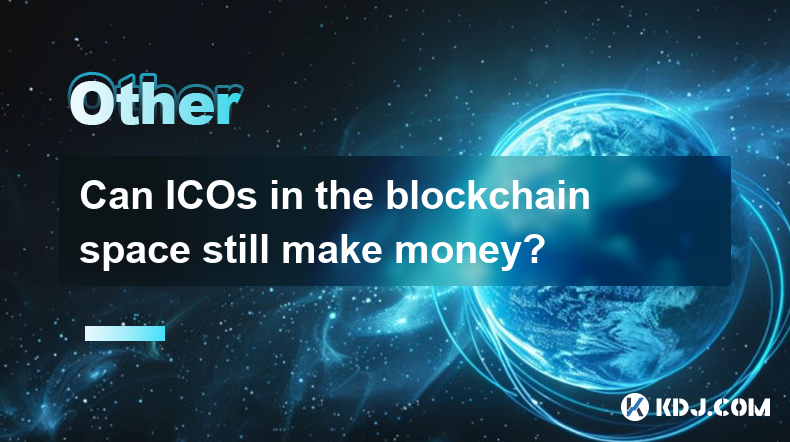
Can ICOs in the blockchain space still make money?
Apr 17,2025 at 08:29pm
The landscape of Initial Coin Offerings (ICOs) in the blockchain space has evolved significantly since their peak in 2017 and 2018. Despite the increased regulatory scrutiny and the rise of alternative fundraising methods like Security Token Offerings (STOs) and Initial Exchange Offerings (IEOs), ICOs can still be a viable way to raise funds and generat...

Can the application of blockchain in supply chain finance bring benefits?
Apr 15,2025 at 04:00pm
Can the application of blockchain in supply chain finance bring benefits? The integration of blockchain technology into supply chain finance has garnered significant attention in the cryptocurrency and financial sectors. This article explores how blockchain can potentially revolutionize supply chain finance, detailing its benefits and providing a compre...
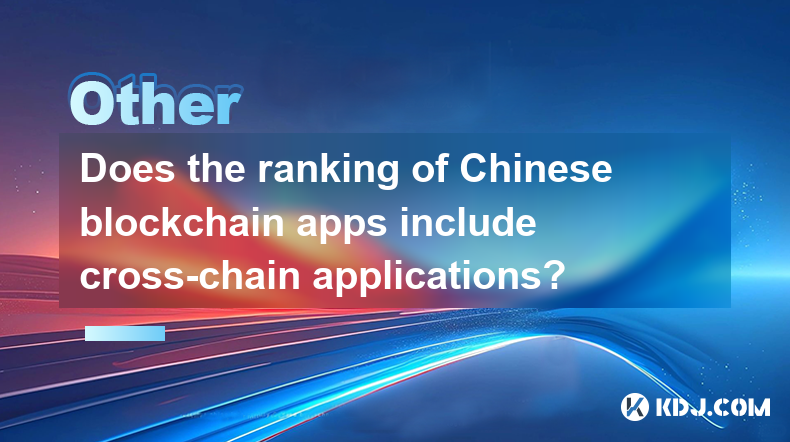
Does the ranking of Chinese blockchain apps include cross-chain applications?
Apr 14,2025 at 04:00pm
The ranking of Chinese blockchain apps is a comprehensive evaluation that takes into account various aspects such as user base, transaction volume, and technological innovation. A pertinent question arises regarding whether these rankings include cross-chain applications. Cross-chain applications, which allow different blockchain networks to interact an...
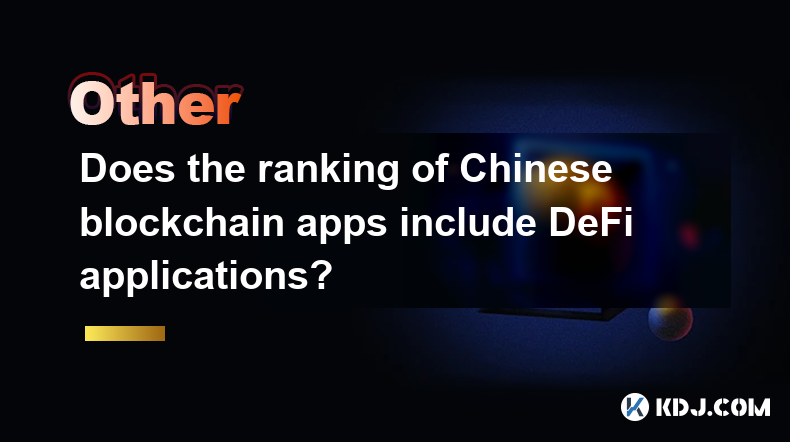
Does the ranking of Chinese blockchain apps include DeFi applications?
Apr 15,2025 at 06:57am
The ranking of Chinese blockchain apps is a comprehensive list that showcases the most popular and influential applications within the cryptocurrency ecosystem. One question that often arises is whether these rankings include DeFi applications. To answer this, we need to delve into the specifics of how these rankings are compiled and what types of appli...
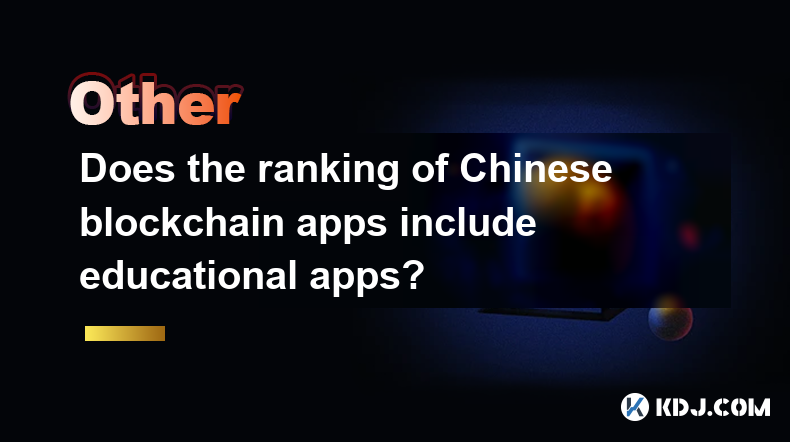
Does the ranking of Chinese blockchain apps include educational apps?
Apr 16,2025 at 03:35am
The ranking of Chinese blockchain apps often includes a variety of categories, from finance and gaming to social networking and beyond. One question that frequently arises is whether these rankings include educational apps. To address this, we need to delve into the specifics of how blockchain apps are categorized and ranked in China, and whether educat...
Does the ranking of Chinese blockchain apps include enterprise-level applications?
Apr 15,2025 at 06:42am
The ranking of Chinese blockchain apps often includes a variety of applications, ranging from consumer-focused to enterprise-level solutions. Understanding the scope and criteria for these rankings is essential to determine if enterprise-level applications are included. This article delves into the specifics of how Chinese blockchain app rankings are co...

Can ICOs in the blockchain space still make money?
Apr 17,2025 at 08:29pm
The landscape of Initial Coin Offerings (ICOs) in the blockchain space has evolved significantly since their peak in 2017 and 2018. Despite the increased regulatory scrutiny and the rise of alternative fundraising methods like Security Token Offerings (STOs) and Initial Exchange Offerings (IEOs), ICOs can still be a viable way to raise funds and generat...

Can the application of blockchain in supply chain finance bring benefits?
Apr 15,2025 at 04:00pm
Can the application of blockchain in supply chain finance bring benefits? The integration of blockchain technology into supply chain finance has garnered significant attention in the cryptocurrency and financial sectors. This article explores how blockchain can potentially revolutionize supply chain finance, detailing its benefits and providing a compre...

Does the ranking of Chinese blockchain apps include cross-chain applications?
Apr 14,2025 at 04:00pm
The ranking of Chinese blockchain apps is a comprehensive evaluation that takes into account various aspects such as user base, transaction volume, and technological innovation. A pertinent question arises regarding whether these rankings include cross-chain applications. Cross-chain applications, which allow different blockchain networks to interact an...

Does the ranking of Chinese blockchain apps include DeFi applications?
Apr 15,2025 at 06:57am
The ranking of Chinese blockchain apps is a comprehensive list that showcases the most popular and influential applications within the cryptocurrency ecosystem. One question that often arises is whether these rankings include DeFi applications. To answer this, we need to delve into the specifics of how these rankings are compiled and what types of appli...

Does the ranking of Chinese blockchain apps include educational apps?
Apr 16,2025 at 03:35am
The ranking of Chinese blockchain apps often includes a variety of categories, from finance and gaming to social networking and beyond. One question that frequently arises is whether these rankings include educational apps. To address this, we need to delve into the specifics of how blockchain apps are categorized and ranked in China, and whether educat...

Does the ranking of Chinese blockchain apps include enterprise-level applications?
Apr 15,2025 at 06:42am
The ranking of Chinese blockchain apps often includes a variety of applications, ranging from consumer-focused to enterprise-level solutions. Understanding the scope and criteria for these rankings is essential to determine if enterprise-level applications are included. This article delves into the specifics of how Chinese blockchain app rankings are co...
See all articles






















































































